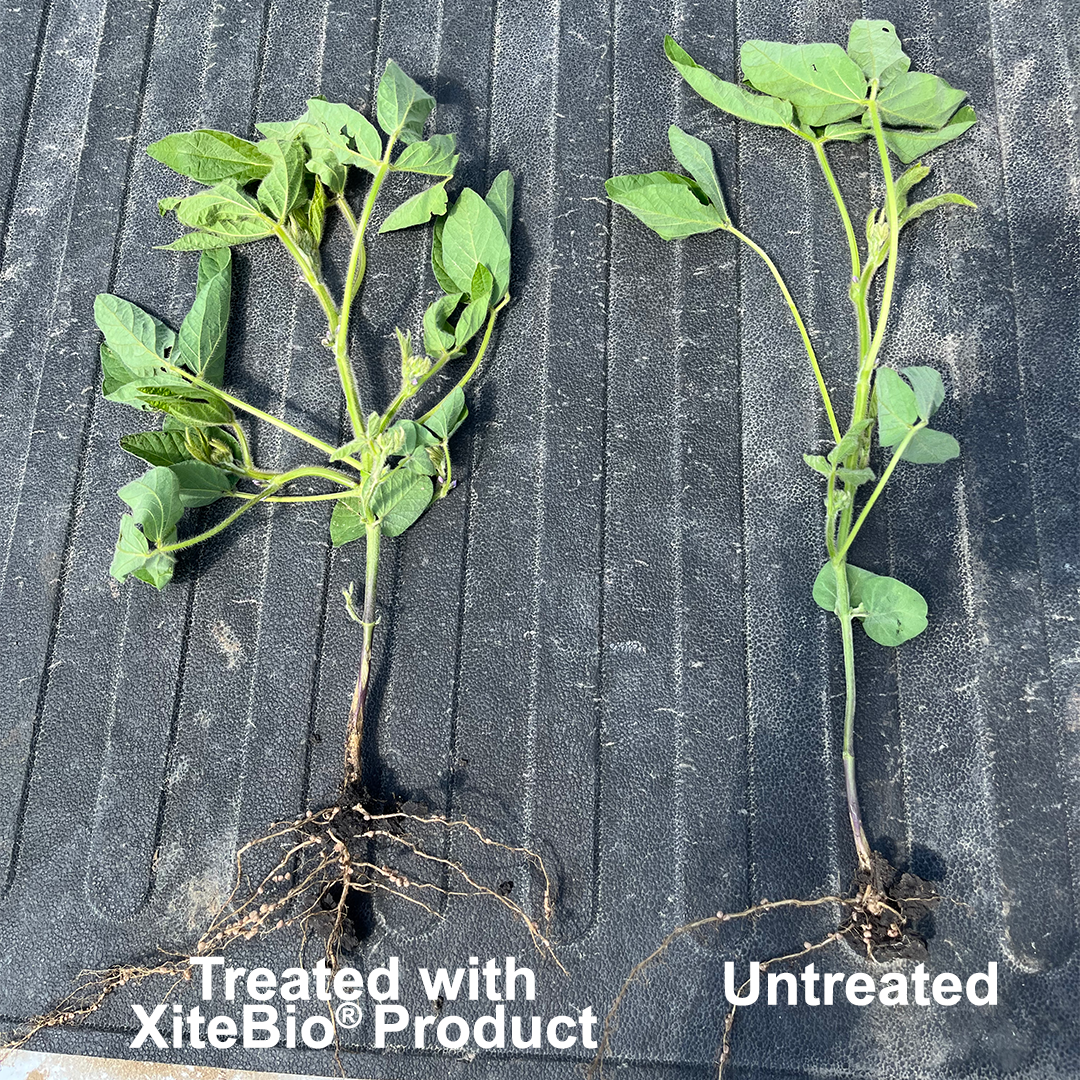Today there are many legume inoculant products for farmers to choose from. In response to this competitive market some manufacturers have begun adding multiple strains to their inoculant products and claiming improved performance. In today’s edition of Growing Possibilities we ask: Are more strains better in legume inoculants?
Researchers recently asked this question by infecting Acrispon strigosus (a native legume of California that forms nodules) with multiple strains of beneficial bacteria. Based on this experiment they determined that the “inter-strain competition that occurs in the soil before the bacteria infect the plant causes fewer bacteria to colonize the plant resulting in the plant gaining smaller benefits in the end.” In other words, more strains were worse not better for nodulation (1) (2).
According to Dr. Manas Banerjee this is because “different strains of bacteria can waste energy fighting each other for limited resources in the seed and soil. But beyond wasting energy there is even a chance that both the winner and loser could be damaged during the fight making their ability to inoculate the plant less effective.”
Let’s take a step back and look at what we mean by strain. When dealing with bacteria we want to focus on three levels: genus, species, and strain. Let’s use Bradyrhizobium japonicum (the active bacteria in soybean inoculant) as an example. Bradyrhizobium is the genus, japonicum is the species and within that species you can have multiple strains. Bradyrhizobium refers to bacteria that form nodules on leguminous plants. Bradyrhizobium japonicum is the type of Bradyrhizobium specific to soybean plants. And then you can have different strains with names like USDA110, USDA122, and USDA123 (3).
Most all inoculant manufacturers are going to use Bradyrhizobium japonicum in their soybean inoculant. But they might cultivate different strains that they feel have different strengths or weaknesses. Recently some manufacturers have begun combining multiple strains into a single inoculant product (4). This is what researchers were studying and what they meant by: inter strain competition.
It’s important to note that this is different from a product like XiteBio® OptiPlus® a dual inoculant that uses bacteria from two different genus. One to fix nitrogen, Bradyrhizobium japonicum and the other to solubilize phosphorus, Bacillus firmus. These bacteria have been found to have synergistic properties and as such competition has not been an issue. As another example when creating XiteBio® SoyRhizo® we focused on creating synergy between the introduced bacteria and the native microflora. The result was our proprietary AGPT technology that allows both the introduced nitrogen fixing bacteria as well as the native soil bacteria to flourish in synergy promoting a healthy rhizosphere (root zone).
When making an inoculant purchasing decision make sure you know what you are buying. Are more strains better in legume inoculants? According to recent data maybe not. Just because someone has a new formulation or claims to have multiple strains doesn’t mean their product is better. In the growing world of ag-biologicals understanding the reactions of introduced bacteria to the soil or seed is just as important as it has been with chemical fertilizers. Until next time we wish you healthier plants and better yields.
- Pittalwala, Iqbal. “Bacteria Beneficial For Plant Growth.” Better Farming, September 2023.
- https://www.sciencedirect.com/science/article/abs/pii/S0960982223008679#:~:text=Host%20benefits%20were%20significantly%20diminished,both%20nodulation%20and%20plant%20growth.
- https://www.ncbi.nlm.nih.gov/pmc/articles/PMC106240/
- https://www.globenewswire.com/en/news-release/2022/07/19/2481986/0/en/Lallemand-Plant-Care-Launches-New-First-of-its-Kind-Multi-Action-Granular-Inoculant-in-Canada.html


